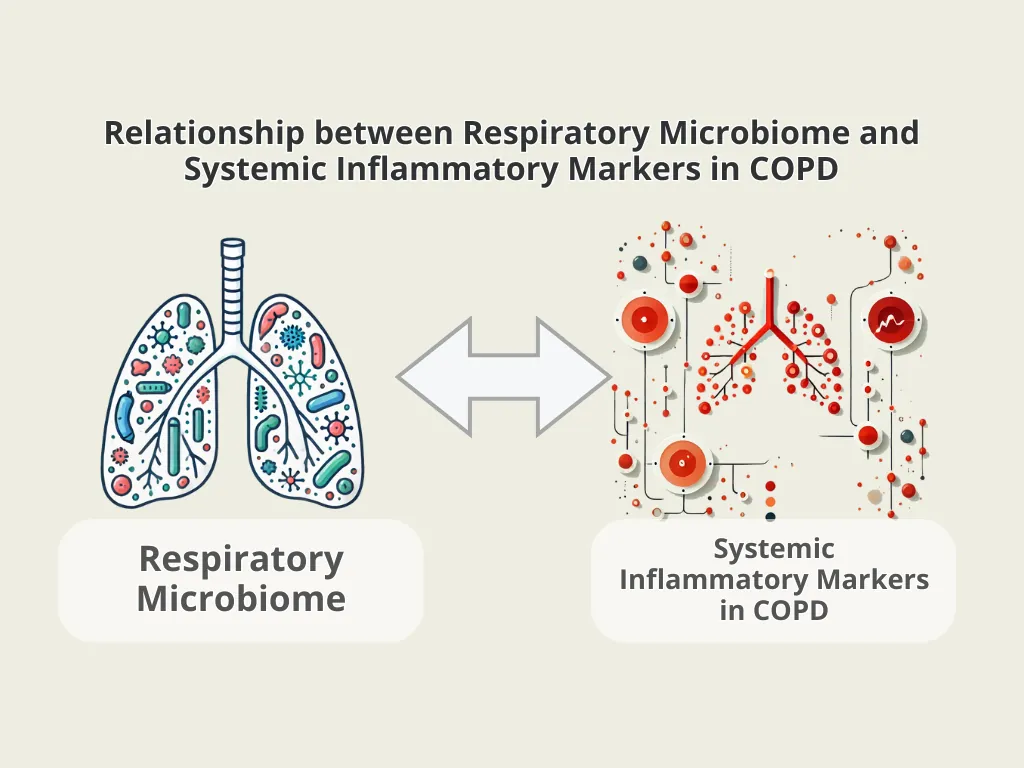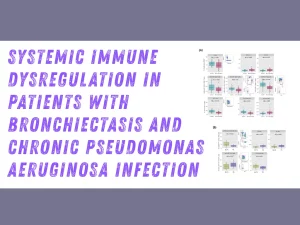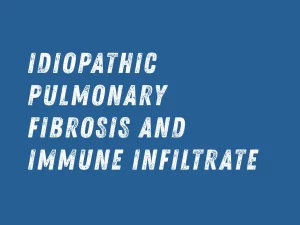Relationship between Respiratory Microbiome and Systemic Inflammatory Markers in COPD: A Pilot Study

Introduction:
The respiratory microbiome may influence the development and progression of COPD by modulating local immune and inflammatory events. We aimed to investigate whether relative changes in respiratory bacterial abundance are also associated with systemic inflammation, and explore their relationship with the main clinical COPD phenotypes.
Methods:
Multiplex analysis of inflammatory markers and transcript eosinophil-related markers were analyzed on peripheral blood in a cohort of stable COPD patients (n = 72). Respiratory microbiome composition was analyzed by 16S rRNA microbial sequencing on spontaneous sputum. Spearman correlations were applied to test the relationship between the microbiome composition and systemic inflammation.
Results:
The concentration of the plasma IL-8 showed an inverted correlation with the relative abundance of 17 bacterial genera in the whole COPD cohort. COPD patients categorized as eosinophilic showed positive relationships with blood eosinophil markers and inversely correlated with the degree of airway obstruction and the number of exacerbations during the previous year. COPD patients categorized as frequent exacerbators were enriched with the bacterial genera Pseudomonas, which, in turn, was positively associated with the severity of airflow limitation and the prior year’s exacerbation history.
Conclusions:
The associative relationships of the sputum microbiome with the severity of the disease emphasize the relevance of the interaction between the respiratory microbiota and systemic inflammation.
Authors
Carme Casadevall, Sara Quero, Laura Millares, Rosa Faner, Borja G. Cosío, Germán Peces-Barba, Ady Castro-Acosta, Concepción Montón, Alexandre Palou, Sergi Pascual-Guardia, Alvar Agustí, Joaquim Gea, Eduard Monsó, and on behalf of the BIOMEPOC group
Read more details at
Fecha de publicación
Published online 2024 Aug 2
Categorías asociadas al artículo
Noticias relacionadas

Systemic Immune Dysregulation in Patients With Bronchiectasis and Chronic Pseudomonas aeruginosa Infection
Study reveals systemic immune alterations in bronchiectasis patients with chronic Pseudomonas infection, highlighting persistent immune imbalance.

Different Immune Infiltrate in Idiopathic Pulmonary Fibrosis Patients With Stable and Progressive Disease
Research on idiopathic pulmonary fibrosis reveals how immune infiltrate differences in early stages influence disease progression. Study highlights the role of B cells, T cells, and NK cells as potential biomarkers.

Towards early detection and disease interception of COPD across the lifespan
Discover how early-life genetic and environmental factors contribute to COPD and how emerging strategies aim to detect and intercept the disease early. Review from the European Respiratory Review, July 2025
Artículos
COPD
- 759578·Alberto Papi et Al.-Relationships between symptoms and lung function in asthma and/or chronic obstructive pulmonary disease in a real-life setting: the NOVEL observational longiTudinal studY
- 759785·Richard Beasley et Al – Prevalence, Diagnostic Utility and Associated Characteristics of Bronchodilator Responsiveness
- 759788·Alvar Agustí, Rod Hughes, Eleni Rapsomaki, Barry Make, Ricardo Del Olmo, Alberto Papi, David Price, Laura Benton, Stefan Franzen, Jørgen Vestbo, Hana Mullerova – The many faces of COPD in real life: a longitudinal analysis of the NOVELTY cohort
- 759883·Alberto Papi, Rosa Faner, Ian Pavord, Federico Baraldi, Vanessa M McDonald, Mike Thomas, Marc Miravitlles, Nicholas Roche, Alvar Agustí. – From treatable traits to GETomics in airway disease: moving towards clinical practice
- 768799·Surya P Bhatt Richard Casaburi Alvar Agusti et Al. Chronic obstructive pulmonary disease: hiding in plain sight, a Statement from the COPD Foundation Medical and Scientific Advisory Committee
Imagen desarrollada DALL·E y ajustada con Canva
